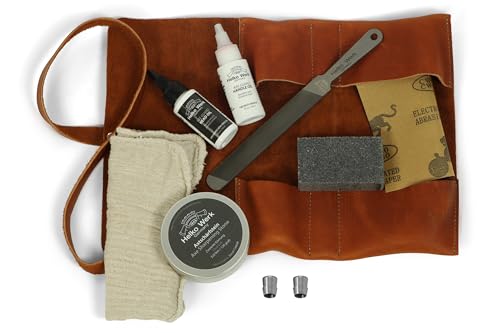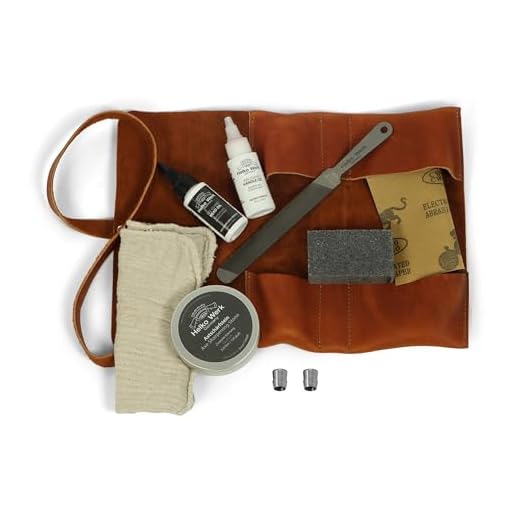


Are you the proud owner of an old rusty axe head that you can’t bear to part with? If so, you’re in luck! Restoring an old axe head is not only a satisfying and rewarding DIY project, but it can also give new life to a forgotten tool that has seen better days. Whether you plan to use the axe for chopping firewood or simply as a decorative piece, this guide will walk you through the step-by-step process of restoring your old rusty axe head to its former glory.
The first step in restoring an old axe head is to remove the rust. Rust can eat away at the metal and weaken the integrity of the tool, so it’s important to address this issue before moving forward. There are several methods that can be used to remove rust, including soaking the axe head in vinegar, using a wire brush or sandpaper to manually scrub away the rust, or even using a chemical rust remover. Whichever method you choose, be sure to wear gloves and protective eyewear to keep yourself safe.
Once the rust has been removed, it’s time to clean the axe head. Use warm soapy water and a scrub brush to remove any remaining dirt or debris. Pay special attention to the area where the axe head meets the haft, as this is often a spot where dirt and grime can accumulate. Rinse the axe head thoroughly and dry it with a clean cloth.
After cleaning, it’s important to protect the axe head from future rusting. Apply a thin coat of oil, such as linseed or mineral oil, to the entire surface of the axe head. This will create a barrier between the metal and the air, preventing moisture from causing rust to form. Allow the oil to soak in for a few minutes, then wipe away any excess oil with a clean cloth.
Finally, if desired, you can polish the axe head to restore its shine. Use a metal polish or a mixture of baking soda and water to gently scrub away any remaining stains or discoloration. Polish the axe head in small circular motions until you achieve the desired shine. Once you’re satisfied with the results, give the axe head one final wipe with a clean cloth to remove any residue.
Now that you’ve restored your old rusty axe head, you’re ready to put it to good use! Whether you plan to use it for chopping wood or proudly display it as a piece of history, your restored axe head is sure to be a conversation starter. Remember to store your axe head in a dry place to prevent future rusting, and enjoy the satisfaction of reviving a piece of forgotten craftsmanship.
Why Restore an Old Rusty Axe Head?
Restoring an old rusty axe head may seem like a lot of work, but there are several reasons why it is worth the effort:
| 1. Preservation of History | Old axes have a story to tell. By restoring an old rusty axe head, you are preserving a piece of history and ensuring that it can be appreciated by future generations. |
| 2. Cost Effectiveness | Buying a new axe can be expensive, especially if you are looking for a high-quality one. Restoring an old rusty axe head allows you to save money while still obtaining a functional tool. |
| 3. Environmental Benefits | By restoring an old rusty axe head, you are participating in a more sustainable lifestyle. Instead of buying a new tool, you are reusing and recycling, reducing waste and the demand for new products. |
| 4. Personal Satisfaction | Restoring an old rusty axe head can be a fulfilling and rewarding experience. Seeing the transformation from a neglected piece of metal to a fully functional tool brings a sense of accomplishment and pride. |
| 5. Improved Performance | An old rusty axe head may not perform as well as it used to. By restoring it, you can bring it back to its former glory, ensuring that it is sharp, effective, and ready for use. |
Overall, restoring an old rusty axe head is a worthwhile endeavor that combines history, cost-effectiveness, environmental consciousness, personal satisfaction, and improved performance.
Benefits of Restoring an Old Rusty Axe Head
Restoring an old rusty axe head can bring numerous benefits and advantages. It is not just about reviving a tool that has seen better days; it is also about reclaiming a piece of history and ensuring the longevity of a valuable tool. Here are some key benefits of restoring an old rusty axe head:
1. Increased efficiency: By removing the rust and restoring the axe head to its original sharpness, you can significantly improve its cutting power. This, in turn, will make your tasks easier and more efficient, allowing you to get the job done in less time.
2. Cost-effective: Restoring an old rusty axe head is more cost-effective than buying a brand new one. It allows you to give new life to an old tool without having to spend a lot of money. All you need are a few simple tools and some patience.
3. Environmental friendliness: By restoring an old rusty axe head, you are contributing to environmental sustainability. Instead of tossing the axe head into landfill and buying a new one, you are reusing and recycling an existing tool, reducing waste and minimizing your carbon footprint.
4. Preserving history and craftsmanship: Many old axe heads hold historical value and craftsmanship that is worth preserving. Restoring them not only brings back their functionality but also honors the craftsmanship of the past. It allows us to appreciate the skillfulness and artistry that went into creating these tools.
5. Personal satisfaction: Restoring an old rusty axe head can be a rewarding and satisfying DIY project. It allows you to work with your hands, learn new skills, and revive a tool that may have been sitting unused for years. The sense of achievement and pride that comes from bringing back an old tool to life is unparalleled.
Overall, restoring an old rusty axe head not only improves its efficiency and saves you money, but it also provides environmental benefits, preserves history, and offers personal satisfaction. So why not pick up that rusted axe head and start the restoration process? You may be surprised at the transformation you can achieve!
Steps to Restore an Old Rusty Axe Head
Restoring an old rusty axe head can bring new life to a valuable tool and ensure its longevity. Here are the steps to restore an old rusty axe head:
1. Remove Rust
Start by removing the rust from the axe head. Use a wire brush or steel wool to scrub away the rust. You can also use a rust-removing chemical if the rust is stubborn. Make sure to wear protective gloves and eyewear during this process.
2. Soak in Vinegar
Next, prepare a vinegar bath by filling a container with equal parts vinegar and water. Place the axe head in the vinegar bath and let it soak for several hours or overnight. The vinegar will help dissolve any remaining rust and make it easier to remove.
3. Scrub and Rinse
After soaking, scrub the axe head again with a wire brush or steel wool to remove any loosened rust. Rinse the axe head with water to remove any vinegar residue. Dry the axe head thoroughly with a clean cloth.
4. Sand and Polish
Once the axe head is completely rust-free, use sandpaper to smooth out any rough patches or blemishes. Start with coarse-grit sandpaper and gradually move to finer grits for a smooth finish. After sanding, polish the axe head with metal polish to restore its shine and protect it from future rust.
5. Sharpen the Blade
Lastly, sharpen the blade of the axe head. Use a file or a sharpening stone to remove any nicks or dullness. Hold the file or sharpening stone at the correct angle and make smooth, even strokes along the entire blade. Test the sharpness of the blade by making a few cuts on a piece of wood.
By following these steps, you can restore an old rusty axe head to its former glory, ensuring its functionality and extending its lifespan.
Cleaning the Axe Head
Once you have removed the rust from the axe head, it’s time to clean the surface thoroughly. Cleaning the axe head will help to remove any remaining debris and prepare the metal for the next steps in the restoration process.
Gather the necessary materials:
- Warm water
- Mild dish soap
- Scrub brush or abrasive sponge
- Old toothbrush
- Steel wool or sandpaper (medium and fine grit)
Follow these steps to clean the axe head:
- Fill a basin or sink with warm water and add a small amount of mild dish soap.
- Place the axe head into the soapy water and let it soak for a few minutes to loosen any dirt or grime.
- Using a scrub brush or abrasive sponge, gently scrub the axe head to remove any remaining dirt or debris. Pay close attention to any crevices or hard-to-reach areas.
- For stubborn rust spots, you can use an old toothbrush to scrub the affected areas.
- Rinse the axe head thoroughly with clean water to remove any soap residue.
- Once the axe head is clean and rinsed, pat it dry with a clean cloth or allow it to air dry completely.
- Inspect the axe head for any remaining rust or pitting. If necessary, you can use steel wool or sandpaper to gently remove any stubborn rust. Start with medium grit and gradually move to fine grit until the surface is smooth.
- Wipe away any debris from sanding or steel wool with a clean cloth.
- Now your axe head should be clean and ready for the next steps in the restoration process.
Remember to take care when handling sharp or abrasive materials. Always wear appropriate protective gear, such as gloves or safety goggles, and work in a well-ventilated area.
Removing Rust from the Axe Head
Rust is a common problem that affects the performance and durability of an old axe head. Luckily, with the right tools and techniques, you can easily remove rust and restore the axe head to its former glory. Here are the steps you can follow to remove rust from the axe head:
1. Cleaning the Axe Head
Before you can remove rust, it’s important to clean the axe head to remove any dirt or debris that might be covering the rust. Start by using a stiff brush to scrub the entire surface of the axe head and remove any loose particles. You can also use a mild detergent or a solution of vinegar and water to help break down any stubborn dirt.
2. Applying Rust Dissolver
Once the axe head is clean, you can apply a rust dissolver to help break down and remove the rust. There are several commercial rust dissolvers available in the market that you can choose from. Follow the instructions on the product label and apply the rust dissolver to the affected areas of the axe head. Make sure to wear gloves and work in a well-ventilated area.
3. Scrubbing and Sanding
After applying the rust dissolver, use a wire brush or steel wool to scrub the rusted areas of the axe head. This will help remove the loosened rust and reveal the clean metal surface underneath. For stubborn rust, you can use sandpaper or a sanding block to gently sand away the rusted layer.
4. Rinsing and Drying
Once you have removed the rust, it’s important to rinse the axe head thoroughly with water to remove any residue from the rust dissolver. Dry the axe head completely with a clean cloth to prevent any moisture from causing further rust.
5. Applying a Protective Coating
To prevent future rusting, it’s recommended to apply a protective coating to the axe head. You can use a rust-inhibiting paint or a coat of oil to create a barrier between the metal surface and moisture. Follow the product instructions for the best results.
By following these steps, you can effectively remove rust from an old rusty axe head and restore it to its original condition. Remember to take proper precautions, such as wearing gloves and working in a well-ventilated area, when handling rust dissolvers and protective coatings.







